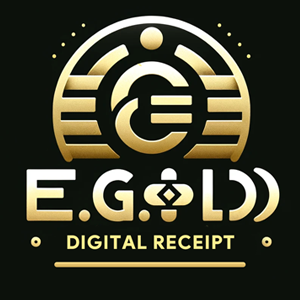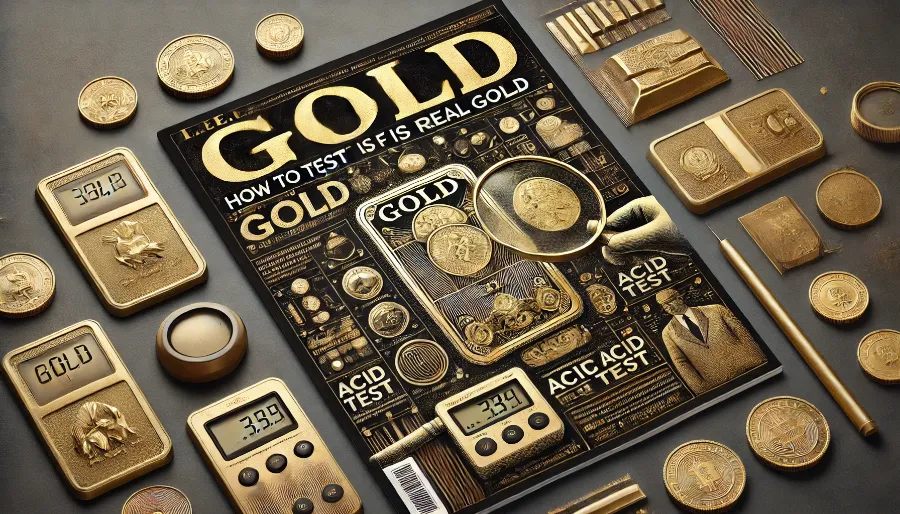
Gold coins have long been valued for their beauty, durability, and as a hedge against economic uncertainty. However, with counterfeits becoming more sophisticated, knowing how to test if a coin is real gold is essential for investors, collectors, and enthusiasts. This guide provides actionable and reliable methods for determining whether a coin is genuine gold or a counterfeit.
Key Methods to Test If a Coin Is Real Gold
1. Examine the Weight and Dimensions
Gold coins are produced to exact specifications for weight, diameter, and thickness. Use a precise digital scale to measure the coin’s weight and a caliper for its dimensions. Compare the results with the official specifications provided by the mint. For example:
- A 1-ounce Gold American Eagle weighs 31.1 grams and has a diameter of 32.7 mm.
- A Canadian Gold Maple Leaf weighs 31.1 grams and has a diameter of 30 mm.
Any discrepancies could indicate that the coin is not real gold.
2. Visual Inspection of Design Details
Authentic gold coins feature intricate designs, sharp engravings, and specific hallmarks that are hard to replicate. Use a magnifying glass to examine:
- Engravings and Text: Check for sharp, clear lettering. Counterfeit coins often have blurry or uneven text.
- Mint Marks: Verify that the mint mark corresponds to the issuing authority of the coin.
- Year of Minting: Ensure the year stamped on the coin matches the historical data for that coin's production.
Compare the coin to high-resolution images of the original from a trusted source.
3. Magnet Test
Gold is non-magnetic. To perform the test:
- Use a strong magnet, like a neodymium magnet, and bring it close to the coin.
- If the coin is attracted to the magnet, it is not pure gold.
However, some counterfeit coins use non-magnetic metals, so this test alone is not definitive.
4. Density Test
The density of gold is 19.32 g/cm³, making it heavier than most metals. To perform a density test:
- Weigh the coin using a precise scale.
- Submerge the coin in water in a graduated cylinder and record the volume of water displaced.
- Divide the coin’s weight by the volume of water displaced to calculate its density.
If the result is significantly lower than 19.32, the coin is not pure gold.
5. Conduct the Ping Test
Gold coins produce a distinct, high-pitched sound when tapped. To perform this test:
- Place the coin on your fingertip or a flat surface.
- Tap it gently with another coin or a non-metallic object.
- Listen for the clear “ping” sound, which indicates gold.
Counterfeit coins typically produce a dull sound due to the presence of base metals.
6. Surface and Color Examination
Gold has a distinct yellow hue and does not tarnish. Examine the coin for:
- Discoloration or Tarnish: If you notice spots or discoloration, the coin might not be real gold.
- Plating: Scratches revealing a different metal beneath the surface are a clear sign of a fake coin.
Compare the color with another gold coin of known authenticity.
7. Acid Test
Gold is resistant to most acids. A gold acid testing kit can help determine purity. To use:
- Rub the coin on a testing stone to leave a streak.
- Apply a small drop of acid (appropriate for the coin’s expected karat level).
- If the streak dissolves, the coin is not gold.
Caution: This method can damage the coin and should only be used if other methods are inconclusive.
8. XRF Spectrometer Analysis
For a highly accurate and non-invasive method, use an X-ray fluorescence (XRF) analyzer. This device identifies the coin’s exact composition by analyzing how it reflects X-rays.
- Benefits: Precise and doesn’t damage the coin.
- Drawbacks: Requires specialized equipment, often available only through professional dealers or jewelers.
9. Hallmarks and Certificates
Authentic gold coins often include hallmarks that indicate purity (e.g., 999 or 24K) and the mint where they were produced. Additionally, many coins come with certificates of authenticity.
- Verify the hallmark against the coin’s specifications.
- Cross-check the certificate details with the issuing authority.
10. Professional Appraisal
When in doubt, consult a professional appraiser, jeweler, or coin dealer. They have the tools and expertise to determine the authenticity of a gold coin accurately.
Common Counterfeiting Techniques and How to Spot Them
Counterfeit coins can be sophisticated. Understanding how they are made can help you identify them.
1. Gold-Plated Coins
These are base metal coins coated with a thin layer of gold.
- How to Spot: Perform the acid test or look for scratches revealing the base metal beneath.
2. Alloyed Coins
Counterfeit coins may contain gold alloyed with other metals to reduce purity.
- How to Spot: Use a density test or XRF analysis to detect impurities.
3. Incorrect Weight and Dimensions
Fake coins often match only one specification (e.g., weight but not diameter).
- How to Spot: Use precise measurement tools and compare to official specifications.
4. Poor Craftsmanship
Counterfeit coins may feature blurry engravings, uneven edges, or incorrect details.
- How to Spot: Compare the coin with high-quality images of the genuine version.
Best Practices to Avoid Counterfeit Coins
1. Purchase from Reputable Dealers
Always buy from trusted sources like mints, authorized dealers, or established marketplaces. Look for dealers affiliated with organizations like the American Numismatic Association (ANA) or the Professional Numismatists Guild (PNG).
2. Verify the Seller’s Reputation
Check reviews, certifications, and customer feedback for online sellers. Avoid purchasing from unknown individuals or unverified platforms.
3. Research Before Buying
Understand the specifications and unique features of the coin you want to buy. Familiarity with its design and dimensions will help you spot irregularities.
4. Avoid Deals That Seem Too Good to Be True
If a coin is offered at a price significantly below market value, it’s likely counterfeit. Gold is a high-value asset, and legitimate sellers rarely offer steep discounts.
5. Request Graded Coins
Coins graded by trusted organizations like the Numismatic Guaranty Corporation (NGC) or Professional Coin Grading Service (PCGS) come with verified authenticity, reducing the risk of buying a fake.
Popular Gold Coins and Their Unique Features
1. American Gold Eagle
- Purity: 22 karats (91.67%)
- Features: Lady Liberty and a family of eagles, marked with weight and gold content.
2. Canadian Gold Maple Leaf
- Purity: 99.99% (24 karats)
- Features: Micro-engraved security features like radial lines and a laser-etched maple leaf.
3. South African Krugerrand
- Purity: 22 karats (91.67%)
- Features: Paul Kruger on the obverse and a springbok antelope on the reverse.
4. British Gold Sovereign
- Purity: 22 karats
- Features: St. George slaying the dragon and a portrait of the reigning monarch.
Advanced Tools for Testing Gold Coins
As the counterfeiting industry becomes more sophisticated, advanced tools and technologies are being used to verify the authenticity of gold coins. These tools are highly accurate and reliable, and they are especially useful for professional dealers, collectors, and serious investors. Here are some advanced techniques and devices to consider:
1. Ultrasound Testing
Ultrasound devices send sound waves through the coin to measure its internal structure. Since gold has a specific acoustic signature, any deviation in the transmission of the sound waves can indicate the presence of other metals or voids within the coin.
- How It Works: The device measures how sound waves pass through the coin and compares the results with the expected signature for gold.
- Advantages: Highly accurate and non-invasive, making it ideal for valuable or rare coins.
- Limitations: Requires specialized equipment, often only available to professionals.
2. Sigma Metalytics Precious Metal Verifier
The Sigma Metalytics Verifier is a widely used device in the industry for testing gold coins. It uses electromagnetic waves to measure the conductivity of the coin and verify its composition.
- How It Works: The device scans the coin and instantly displays whether it meets the expected conductivity for gold.
- Advantages: Portable, quick, and non-invasive. It can also test through plastic cases, which is helpful for graded coins.
- Limitations: May not detect hollow or layered counterfeits.
3. Digital Calipers and Micrometers
Digital calipers and micrometers are precision tools used to measure the coin's diameter and thickness with high accuracy. This helps detect coins that match the weight but have incorrect dimensions due to being made of less dense metals.
- How It Works: Place the tool on the coin to measure its thickness or diameter, and compare it to official specifications.
- Advantages: Affordable and easy to use.
- Limitations: May not detect internal counterfeiting techniques, like filling with tungsten.
4. Specific Gravity Testers
Specific gravity testers provide a more refined and accurate way of measuring a coin’s density compared to a manual water displacement test. These machines are calibrated to determine the specific gravity of precious metals like gold.
- How It Works: The coin is weighed in air and then submerged in water. The device calculates its specific gravity based on these measurements.
- Advantages: Highly reliable for testing gold purity.
- Limitations: Requires a controlled environment for accurate results.
5. Spectrometer Analysis
A spectrometer uses light to analyze the coin’s composition. By shining a laser on the surface and measuring the reflected wavelengths, it determines the exact materials in the coin.
- How It Works: The device identifies the elements in the coin and provides a detailed breakdown of its composition.
- Advantages: Highly accurate and non-invasive, ideal for detecting plated or alloyed coins.
- Limitations: Spectrometers are expensive and typically used by large-scale dealers or mints.
Common Red Flags for Fake Gold Coins
While advanced tools can verify authenticity, there are simple warning signs that should raise suspicion even before testing a coin.
1. Price Too Good to Be True
Gold is a highly valuable asset, and counterfeiters often attract buyers with low prices. If the price is significantly below the current market value, it’s likely a scam. Always check the spot price of gold before purchasing.
2. Lack of Documentation
Reputable sellers usually provide certificates of authenticity or proof of origin for their coins. If the coin comes with no documentation or the certificate seems fake or poorly made, proceed with caution.
3. Unusual Surface or Color
Gold coins have a distinct appearance, with a rich yellow hue and a smooth surface. Counterfeit coins may look too shiny, have uneven finishes, or show discoloration over time.
4. Odd Weight and Feel
Gold is a dense metal, and genuine gold coins feel heavy for their size. If a coin feels too light or seems off when compared to a similar authentic coin, it may be fake.
5. Seller Reputation
Always research the seller before buying. Look for customer reviews, check for affiliations with reputable organizations, and avoid sellers who cannot verify the authenticity of their coins.
Protecting Your Investment
Testing and verifying gold coins is an essential step in safeguarding your investment. However, taking proactive measures can prevent you from encountering counterfeit coins in the first place.
1. Buy from Reputable Dealers
Purchasing from trusted dealers reduces the risk of buying fake coins. Look for dealers who are members of professional organizations like the Professional Numismatists Guild (PNG) or the American Numismatic Association (ANA).
2. Request Certification
Graded coins from respected certification bodies like the Numismatic Guaranty Corporation (NGC) or the Professional Coin Grading Service (PCGS) come with tamper-proof holders and certificates of authenticity.
3. Maintain Proper Storage
Store your gold coins in a safe and secure environment to prevent damage and loss. Use tamper-proof packaging or certified holders to maintain the coin’s integrity and value.
4. Stay Informed
Follow updates from mints, coin associations, and trusted dealers about new counterfeit techniques. Knowledge about the coin’s specifications and features can help you identify inconsistencies.
5. Keep Records of Purchases
Maintain detailed records of your purchases, including receipts, certificates, and seller information. These records will help verify the coin's authenticity if you decide to sell it in the future.
Popular Real Gold Coins and Their Features
Authentic gold coins are produced with high precision and come with unique features to ensure their legitimacy. Here are some examples of popular gold coins and their defining traits:
1. Gold American Eagle
- Purity: 22 karats (91.67%)
- Features: Lady Liberty on the obverse and a family of eagles on the reverse.
- Authenticity: The coin is marked with its gold weight and content.
2. Canadian Gold Maple Leaf
- Purity: 99.99% (24 karats)
- Features: A maple leaf design with micro-engraved radial lines and laser-etched security marks.
- Authenticity: Advanced security features, including a unique digital authentication system.
3. South African Krugerrand
- Purity: 22 karats (91.67%)
- Features: Paul Kruger on the obverse and a springbok antelope on the reverse.
- Authenticity: Recognized globally for its consistent design and specifications.
4. British Gold Sovereign
- Purity: 22 karats
- Features: St. George slaying the dragon and a portrait of the reigning monarch.
- Authenticity: Exact weight and dimensions with a long history of production.
5. Chinese Gold Panda
- Purity: 99.9% (24 karats)
- Features: Annually changing panda designs.
- Authenticity: Precision in craftsmanship and unique yearly designs.
Final Thoughts
Ensuring the authenticity of a gold coin requires a combination of physical inspection, testing, and buying practices. Whether you are a casual collector or a serious investor, taking the time to verify your coins will protect you from financial losses and scams. Use the tools and methods outlined in this guide, and always prioritize buying from trusted sources. With the right knowledge and precautions, you can enjoy the enduring value and beauty of genuine gold coins.
NOTE
This Content is the copyrighted content of EE.GOLD. All rights are reserved. You are welcome to share or use our content only by including direct links to our website. Any other form of reproduction, distribution, or use without proper attribution is strictly prohibited.
This Content is intended solely for educational purposes. The information provided does not constitute financial or investment advice.
Please note that Digital Storage Receipt, Secure Storage Solutions, and Physical Gold Sales are the only services offered by EE.GOLD.
We strictly adhere to government regulations and are firmly against all illegal financial or investment activities globally.
For further inquiries, feel free to contact us through our official channels.

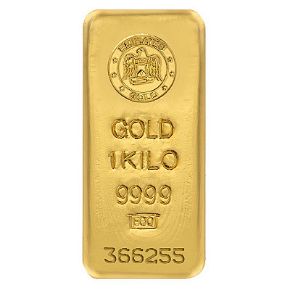
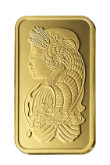





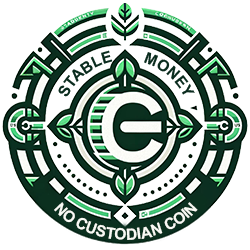

.png)

